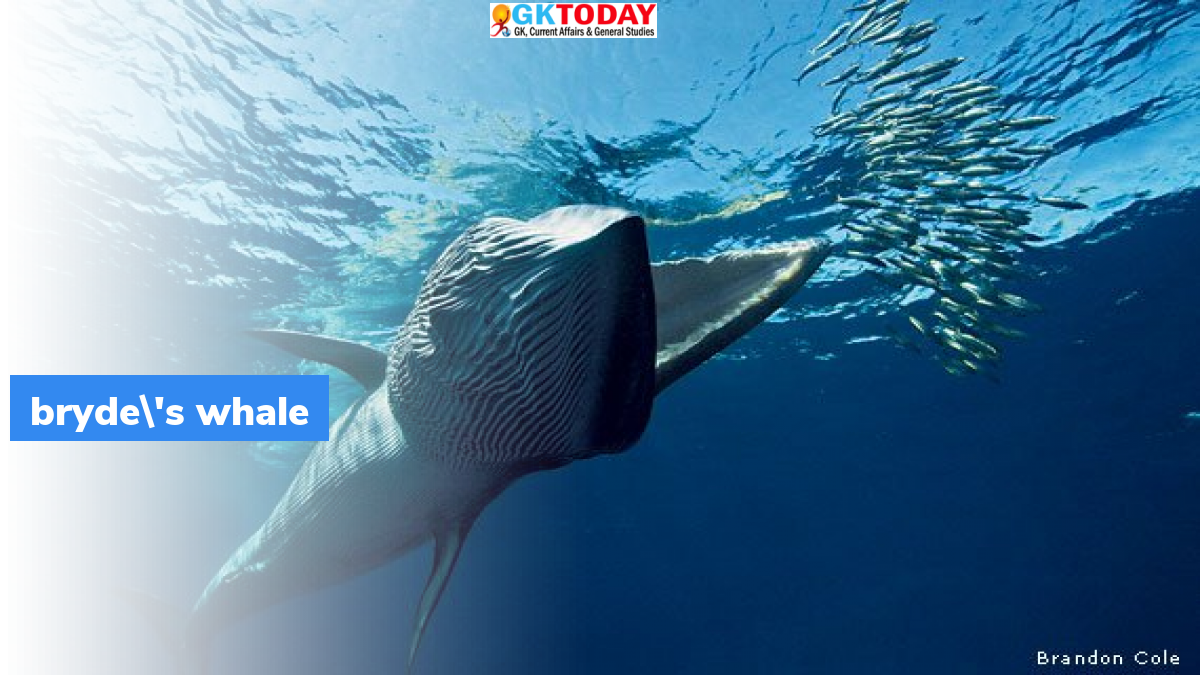Bryde’s Whale
The Bryde’s Whale occurs in warm temperate and tropical waters. It is mostly restricted to Indo – Pacific. Also, the Bryde’s whales are the only baleen whales to spend their entire lives in tropical and subtropical waters. They are also called Pygmy Bryde’s whale, common bryde’s whale, tropical whale and Eden’s whale.
Bryde’s Whale is a Baleen Whale
The Bryde’s Whale is 15 metres long. It is a Baleen Whale. The Baleen Whales use filter feeding mechanism. They open their mouth under water to let in the water. They then push the water out and the prey are filtered and remain as food source. It has twin blow holes. The whale has no teeth. It only has two rows of baleen plates.
Whaling
Historically the Bryde’s Whales were not the commercial target. But they gained their significance in 1970s when the whaling industry depleted other targets. They are mainly hunted by the Japanese, Indonesians, Philippines and Taiwan, Peru, Brazil, etc.
Threats
The increasing anthropogenic noises are great threats to these whales. This is because they communicate in low frequencies. Noise pollution damage the hearing of whales and in extreme cases leads to internal bleeding and eventually death. As the ships noises increase in the ocean, they shrink the world of whales. The ship noises shrink the range at which whales stay in contact.
Conservation
The Bryde’s Whales are protected under the Marine Mammal Protection Act of 1972. The IUCN has listed Bryde’s whale as Least Concern.
Critically endangered in Gulf of Mexico
The Bryde’s Whales have become critically endangered in Gulf of Mexico. These are the only baleen whales living in the Gulf. They are hit mainly due to oil spills. 17% of the Bryde’s whales died in oil spills.
Unclear status
In many countries, the status of these whales is unknown. Also, the other threats faced by the whales are also not known.


